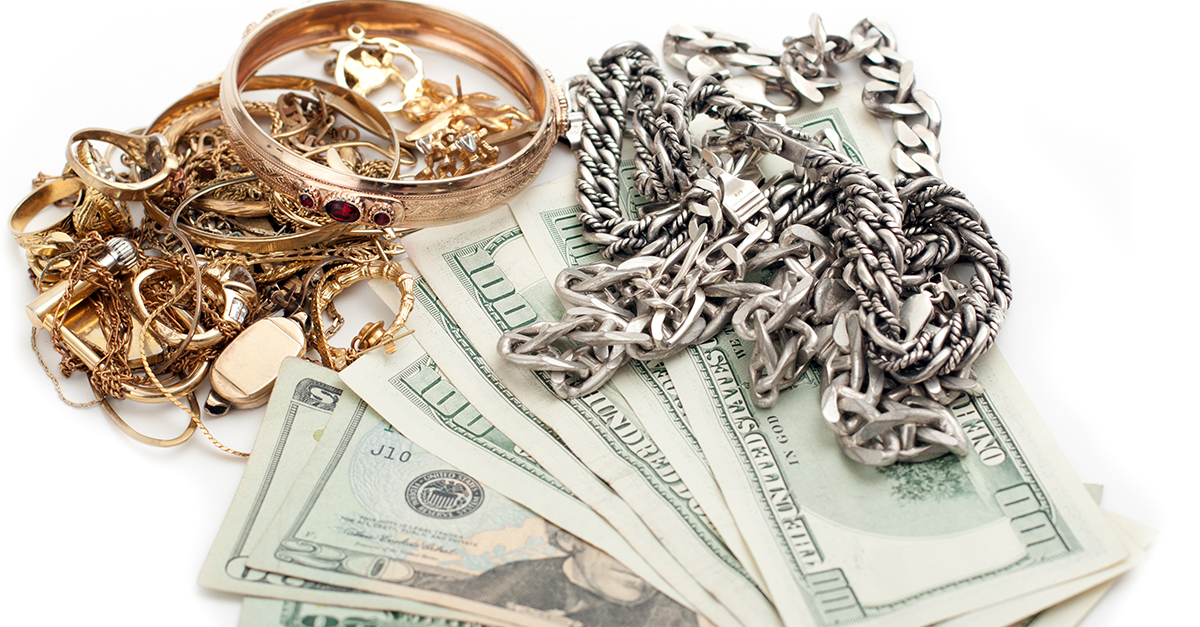You can make big money, but you could also sustain huge losses
Silverware, jewelry and precious metal knickknacks around the house can serve as a rich source of funds. Some family heirlooms might have more than just sentimental value—they could be worth the kind of real dollars that you can spend!
Many people, unaware of how to determine if something is valuable, are quick to give away these items—or sell them to a dishonest merchant who dramatically undervalues them.
It’s easy to fall prey to merchants who advertise in newspapers with screaming ads claiming that they pay the highest price for your gold and silver rings and things. Some of these fraudsters rent a hotel room for a day or two and offer to pay cash during their short stays.
Some years back, I worked with the CBS syndicated TV show Inside Edition, and we investigated what some merchants were willing to pay. On a rare 1882 $3 proof gold coin worth conservatively at least $5,000, the undercover Inside Edition producer was offered only $500.
When selling your precious metals rings and heirlooms, always deal with a reputable dealer or merchant. A dealer who has a brick and mortar store and is established within your community is a must. Search out proprietors who are members of the American Numismatic Association, Jewelers of America and/or the Gemological Institute of America.
Also, word of mouth reputations are important. Ask friends and relatives about the merchant you plan to deal with. Research reputations online and check them out with the Better Business Bureau (BBB). An A+ rating with the BBB is a good sign of how a merchant does business.
Once you’ve found a place that meets your standards of doing business, you can more clearly map out a strategy to sell your wares.
You need to know how much precious metal such as gold, silver or platinum your item contains—and if it’s worth something above its metal value to collectors. For example, you might have a pen made by Cartier in 1982 that contains $200 worth of gold. But if you compare your pen to others like it that have recently sold on eBay, you might find that they all sold for about $400 each, making your pen worth probably more than double what it would be worth if you sold it just for its gold value.
To go about this process, you need to find out what your item is made from and calculate the amount of precious metal it contains. Examining every metal and every item is beyond the scope of one blog posting, so for brevity, we’ll just take a superficial peek at gold and a few silver basics.
Gold items are manufactured in a number of “finenesses” or purity degrees. The fewer the karts, the less the gold percentage. For example, 24 karat is 24/24ths or 100% gold. 12 karats is 12/24ths or 50% gold.
If you look carefully, you should see the fineness of gold imprinted somewhere on your rings and things—if they are gold. Usually, the stamped fineness is reliable. This imprinted fineness applies to silver, too.

Jewelers and coin dealers have chemical kits and special laser equipment to test the purity of items made from precious metals.
When it comes to your rings and things, if you have jewelry with stones more than 0.25 inches in diameter, you might want to consign these items to auction. Check with jewelry stores and coin dealers in your area to see if they accept items on consignment.
As for your silverware, the value is based much the same as on “scrap” jewelry. Most sterling silver is marked as such. Use a magnifying glass to look. Sterling silver has a fineness of .925, meaning it’s 925 parts silver and 75 parts alloy. Flatware also is made from lower grade silver, such as .800 and .835. Many buyers shy away from purchasing silver plated utensils because that silver value is so minuscule. And silverware can be tricky because often the handle is silver and the blade is stainless steel.
Reputable dealers will publish online and at their places of business the prices they pay for sterling silver and gold of specific karats. If you are not selling your items by consignment, auction or some other competitive process, get at least two offers before selling.
You can check comparables of what you have for sale on eBay.com, Etsy.com and HA.com. Many of the items you have to sell were likely made in large quantity, so it might be easy to determine if they are worth more than their metal content by a simple search of what identical items recently sold for.
My video on this subject might also help you here. Happy hunting!


